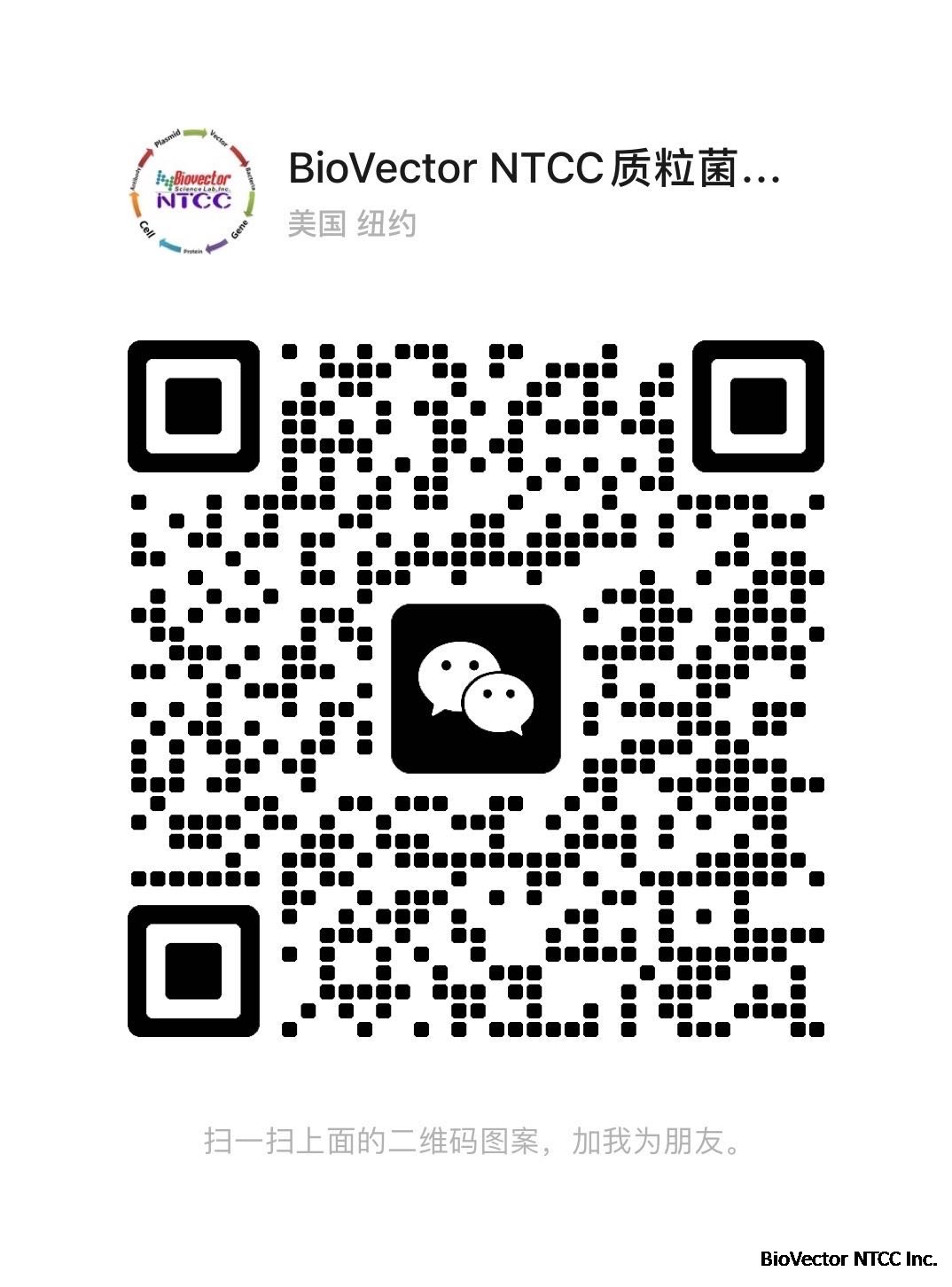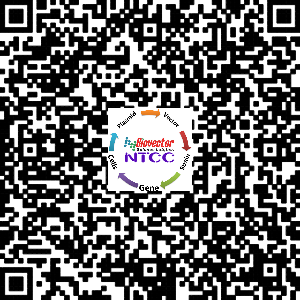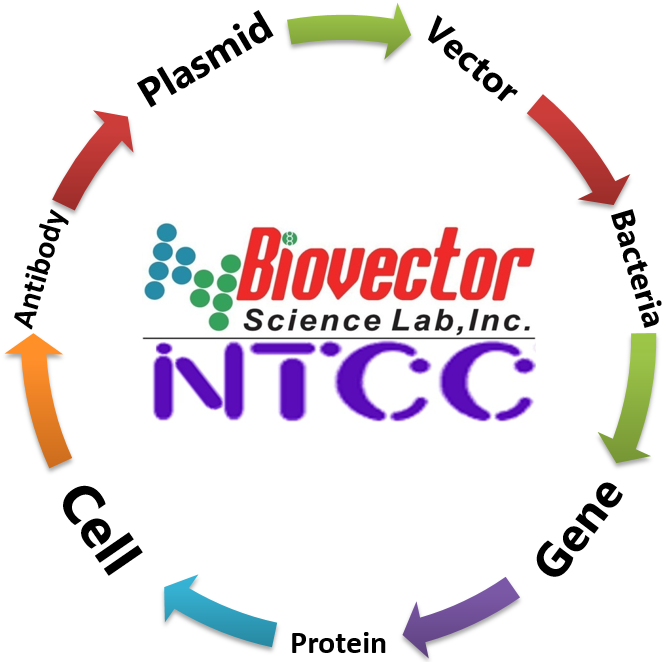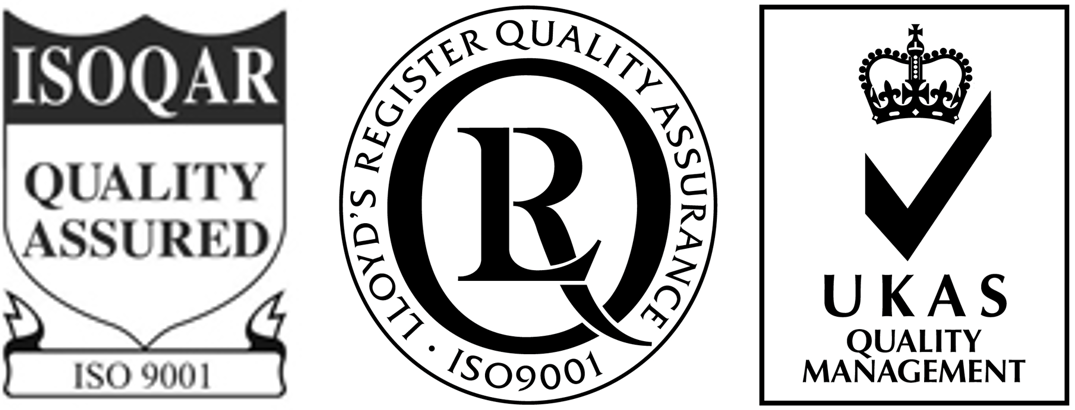BA/F3_BCR-ABL T315I激酶Kinase穩定表達細胞株-BioVector NTCC保藏中心
- 價 格:¥0
- 貨 號:BA/F3_BCR-ABL T315I
- 產 地:北京
- BioVector NTCC典型培養物保藏中心
- 聯系人:Dr.Xu, Biovector NTCC Inc.
電話:400-800-2947 工作QQ:1843439339 (微信同號)
郵件:Biovector@163.com
手機:18901268599
地址:北京
- 已注冊
BA/F3_BCR-ABL T315I激酶Kinase穩定表達細胞株-BioVector NTCC保藏中心
I. Introduction
Cell Line Name:
Ba/F3_BCR-ABL1 T315I
Host Cell:
Ba/F3
Stability: 16 passages
Application:
Anti-proliferation assay and PD assay
Freeze Medium:
90% FBS+10% DMSO
Complete Culture Medium:
RPMI-1640+10% FBS+1 ug/ml puromycin
Mycoplasma Status:
Negative
II.Background
Presence of a BCR-ABL1 fusion gene is necessary for the pathogenesis of CML. In up to 95% of cases, a t(9;22) (q34;q11) translocation results in the BCR-ABL1 fusion gene (Faderl et al. 1999). This translocation results in the Philadephia chromosome. In rare CML cases lacking the traditional t(9;22) translocation, other translocations result in the creation of the BCR-ABL1 fusion gene, which sometimes involve multiple chromosomes.
ABL1 is a tyrosine kinase, and, in normal cells, it plays a role in cellular differentiation and regulation of the cell cycle. The BCR-ABL1 fusion gene creates a constitutively active tyrosine kinase, which leads to uncontrolled proliferation.
Imatinib is the first-generation ABL tyrosine kinase inhibitor, and it was approved by the FDA in 2001; label indications for CML include use in newly diagnosed adult and pediatric patients and in patients after failure of interferon-alpha therapy. While treatment responses to imatinib are often dramatic and lasting, 30–40% of patients will eventually need further treatment (Santos et al. 2011). In many but not all cases, this is due to the acquisition of point mutations in the tyrosine kinase domain of the BCR-ABL1 fusion gene, which renders the protein insensitive to the inhibitory effect of imatinib. This type of disease progression led to the development of second-line TKIs: dasatinib, nilotinib, and bosutinib. Dasatinib and bosutinib have the additional advantage of being inhibitors of SRC.
The second-generation TKIs, dasatinib, nilotinib, and bosutinib, are more potent than imatinib, and they were developed to treat cases of CML resistant to imatinib. Dasatinib and nilotinib are approved for use in CML in newly diagnosed adults, while dasatinib, nilotinib, and bosutinib are approved for use in adults with resistance or intolerance to prior therapy that included imatinib (FDA 2012). Soverini et al. (2011) made mutation-specific treatment decision recommendations that were adopted by NCCN (2012?). Recommendations based on preclinical data are as follows: for T315I, HSCT or clinical trial; for V299L, T315A, and F317L/V/I/C, consider nilotinib rather than dasatinib; for Y253H, E255K/V, and F359V/C/I, consider dasatinib rather than nilotinib; and for all other mutations, consider high-dose imatinib, dasatinib, or nilotinib.
Ponatinib is a third-line TKI, developed specifically to address imatinib resistance due to the BCR-ABL1 T315I resistance mutation. Ponatinib is currently being investigated in phase III clinical trials.
III. Representative Data
1. WB of BCR-ABL expression
2. Anti-proliferation assay
Figure 2. Anti-proliferation assay of two reference compounds on the Ba/F3_BCR-ABL T315I Stable Cell Line
IV. Thawing
Thawing: Protocol
1. Remove the vial from liquid nitrogen tank and thaw cells quickly in a 37°C water-bath.
2. Just before the cells are completely thawed, decontaminate the outside of the vial with 70% ethanol and transfer the cells to a 15 ml centrifuge tube containing 9 ml of complete growth medium.
3. Pellet cells by centrifugation at 200 x g force for 5 min, and discard the medium.
4. Resuspend the cells in complete growth medium.
5. Add 10 ml of the cell suspension in a 10 cm dish.
6. Add promycin to a concentration of 1 μg/ml the following day.
Kinase細胞株
現代新藥研發的關鍵首先是尋找,確定和制備藥物作用靶點。在500多個已發現的藥物靶點里中,GPCR,Ion Channel,Kinase使用的最為廣泛。
激酶(kinase)是一類從高能供體分子(如ATP)轉移磷酸基團到特定靶分子(底物)的酶;這一過程謂之磷酸化。許多腫瘤的發生是由某些與生長相關的“激酶”發生突變導致異常活化引起的,因而針對這些突變激酶的抑制劑能夠有效抑制這些激酶的活性,從而達到抑制癌細胞增長的目的。
BioVector NTCC質粒載體菌種細胞蛋白抗體基因保藏中心
電話:+86-010-53513060
網址:www.biovector.net
I. Introduction
Cell Line Name:
Ba/F3_BCR-ABL1 T315I
Host Cell:
Ba/F3
Stability: 16 passages
Application:
Anti-proliferation assay and PD assay
Freeze Medium:
90% FBS+10% DMSO
Complete Culture Medium:
RPMI-1640+10% FBS+1 ug/ml puromycin
Mycoplasma Status:
Negative
II.Background
Presence of a BCR-ABL1 fusion gene is necessary for the pathogenesis of CML. In up to 95% of cases, a t(9;22) (q34;q11) translocation results in the BCR-ABL1 fusion gene (Faderl et al. 1999). This translocation results in the Philadephia chromosome. In rare CML cases lacking the traditional t(9;22) translocation, other translocations result in the creation of the BCR-ABL1 fusion gene, which sometimes involve multiple chromosomes.
ABL1 is a tyrosine kinase, and, in normal cells, it plays a role in cellular differentiation and regulation of the cell cycle. The BCR-ABL1 fusion gene creates a constitutively active tyrosine kinase, which leads to uncontrolled proliferation.
Imatinib is the first-generation ABL tyrosine kinase inhibitor, and it was approved by the FDA in 2001; label indications for CML include use in newly diagnosed adult and pediatric patients and in patients after failure of interferon-alpha therapy. While treatment responses to imatinib are often dramatic and lasting, 30–40% of patients will eventually need further treatment (Santos et al. 2011). In many but not all cases, this is due to the acquisition of point mutations in the tyrosine kinase domain of the BCR-ABL1 fusion gene, which renders the protein insensitive to the inhibitory effect of imatinib. This type of disease progression led to the development of second-line TKIs: dasatinib, nilotinib, and bosutinib. Dasatinib and bosutinib have the additional advantage of being inhibitors of SRC.
The second-generation TKIs, dasatinib, nilotinib, and bosutinib, are more potent than imatinib, and they were developed to treat cases of CML resistant to imatinib. Dasatinib and nilotinib are approved for use in CML in newly diagnosed adults, while dasatinib, nilotinib, and bosutinib are approved for use in adults with resistance or intolerance to prior therapy that included imatinib (FDA 2012). Soverini et al. (2011) made mutation-specific treatment decision recommendations that were adopted by NCCN (2012?). Recommendations based on preclinical data are as follows: for T315I, HSCT or clinical trial; for V299L, T315A, and F317L/V/I/C, consider nilotinib rather than dasatinib; for Y253H, E255K/V, and F359V/C/I, consider dasatinib rather than nilotinib; and for all other mutations, consider high-dose imatinib, dasatinib, or nilotinib.
Ponatinib is a third-line TKI, developed specifically to address imatinib resistance due to the BCR-ABL1 T315I resistance mutation. Ponatinib is currently being investigated in phase III clinical trials.
III. Representative Data
1. WB of BCR-ABL expression
2. Anti-proliferation assay
Figure 2. Anti-proliferation assay of two reference compounds on the Ba/F3_BCR-ABL T315I Stable Cell Line
IV. Thawing
Thawing: Protocol
1. Remove the vial from liquid nitrogen tank and thaw cells quickly in a 37°C water-bath.
2. Just before the cells are completely thawed, decontaminate the outside of the vial with 70% ethanol and transfer the cells to a 15 ml centrifuge tube containing 9 ml of complete growth medium.
3. Pellet cells by centrifugation at 200 x g force for 5 min, and discard the medium.
4. Resuspend the cells in complete growth medium.
5. Add 10 ml of the cell suspension in a 10 cm dish.
6. Add promycin to a concentration of 1 μg/ml the following day.
Kinase細胞株
現代新藥研發的關鍵首先是尋找,確定和制備藥物作用靶點。在500多個已發現的藥物靶點里中,GPCR,Ion Channel,Kinase使用的最為廣泛。
激酶(kinase)是一類從高能供體分子(如ATP)轉移磷酸基團到特定靶分子(底物)的酶;這一過程謂之磷酸化。許多腫瘤的發生是由某些與生長相關的“激酶”發生突變導致異常活化引起的,因而針對這些突變激酶的抑制劑能夠有效抑制這些激酶的活性,從而達到抑制癌細胞增長的目的。
BioVector NTCC質粒載體菌種細胞蛋白抗體基因保藏中心
電話:+86-010-53513060
網址:www.biovector.net
- 公告/新聞




